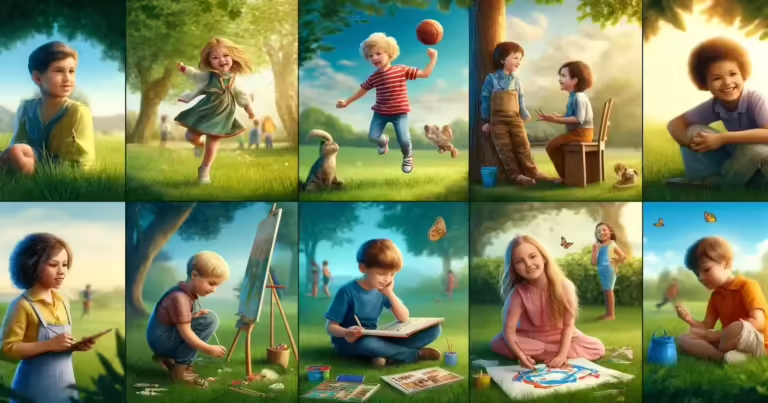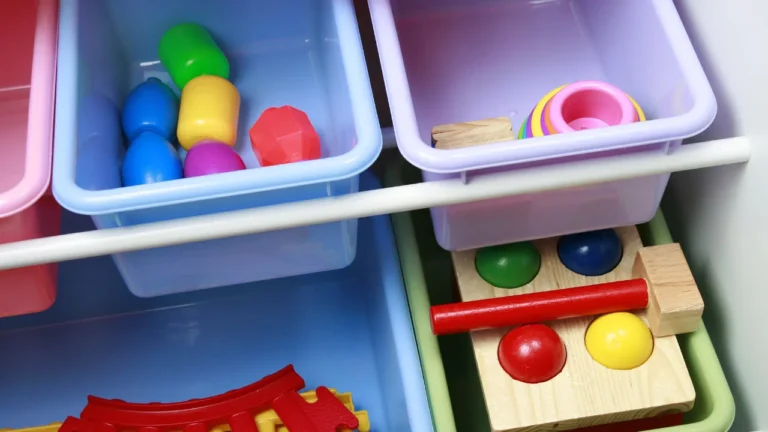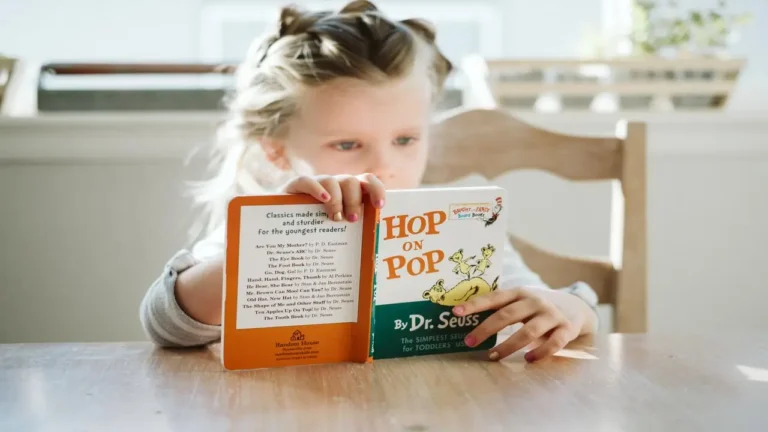Unlock Your Child’s Perfect Politeness: Teach Kids Manners Today!

Teach Kids Manners with a Dash of Laughter; Raising well-mannered, respectful, and empathetic children who can glide through social situations like a swan on a lake might seem like a daunting task. But fear not, dear parents! In this article, we’ll unravel the mysteries of teaching your little ones the art of good manners, with a sprinkle of humor to keep things light-hearted.
We’ll explore the key manners every child should learn, share tips for effectively instilling etiquette (without becoming the Manners Police), and offer guidance on what to do when your child momentarily forgets their manners (spoiler alert: panicking is not the answer). So grab your favorite beverage, relax, and let’s embark on this delightful journey of teaching kids manners, one chuckle at a time!
What Manners Should I Teach My Child?
A well-mannered child should learn basic etiquette in various aspects of life, such as:
Tips on How To Teach Kids Manners
Provide Explicit Instruction
Direct instruction is crucial in teaching good manners. It’s essential to communicate clearly and effectively with your child about what is expected of them and why. Here are some ways to provide explicit instruction on manners:
Break down the concepts: Start by introducing the basic principles of good manners, such as respect, empathy, and consideration for others. Help your child understand that their actions and words can have a significant impact on the feelings and comfort of those around them.
Use real-life examples: Share stories or situations where good manners made a positive difference, or where poor manners led to negative outcomes. This will help your child see the importance of manners in their daily lives and the impact they can have on their relationships.
Demonstrate the manners: Show your child how to perform the desired behavior, such as properly greeting someone, saying please and thank you, or offering help. This hands-on approach will make it easier for your child to understand and emulate the appropriate behavior.
Encourage questions and discussions: Make it a point to have open conversations with your child about manners, encouraging them to ask questions and express their thoughts. This will create a safe space for them to learn, grow, and develop a deeper understanding of why manners matter.
Repetition and reinforcement: As with any skill, practice makes perfect. Regularly review and reinforce the importance of good manners with your child. Revisit the lessons and discuss how they can continue to improve their behavior.
Incorporate visual aids: Children often respond well to visual cues. Create charts, posters, or other visual aids that highlight the key manners you want your child to learn. Place these in prominent locations around your home to serve as a constant reminder.
Make it fun: To keep your child engaged and interested in learning manners, incorporate games, activities, and role-playing exercises into your lessons. This will make the learning process enjoyable and help to create positive associations with practicing good manners.
By providing explicit instruction in a thoughtful and engaging manner, your child will be more likely to internalize the importance of good manners and consistently demonstrate respectful behavior. Remember, patience and persistence are key – it takes time and practice for children to develop and maintain good manners.
Keep Expectations Age-Appropriate: Tailoring Manners to Developmental Stages
When teaching your child manners, it’s crucial to adjust your expectations based on their age and developmental level. Understanding that children develop at different rates and possess varying abilities will help you tailor your approach and set realistic expectations. Here are some tips for keeping expectations age-appropriate and fostering a supportive learning environment:
Understand developmental milestones: Familiarize yourself with typical developmental milestones for children at different ages. This will help you gauge your child’s current abilities and determine which manners and social skills are appropriate to teach at each stage of their development.
Start simple: For younger children, begin with basic manners and social skills, such as saying please, thank you, and sorry. As your child grows and matures, gradually introduce more complex skills, like making eye contact, taking turns in conversation, and expressing empathy.
Be patient and understanding: Recognize that children may struggle with certain manners and social skills, especially when they’re young. Practice patience and understanding, offering gentle guidance and encouragement rather than harsh criticism or punishment.
Encourage progress, not perfection: Focus on your child’s progress and effort rather than expecting perfect behavior. Acknowledge their attempts at using manners, even if they don’t get it right every time, and celebrate their improvements.
Reinforce age-appropriate skills: Regularly review and reinforce manners and social skills that are appropriate for your child’s age. This will help them develop a strong foundation in etiquette and respect for others as they grow.
Provide opportunities for practice: Give your child plenty of opportunities to practice their manners and social skills in real-life situations. This could involve playdates, family gatherings, or community events, where they can interact with others and put their newly learned skills to the test.
Adapt to your child’s unique needs: Be mindful of your child’s individual strengths, weaknesses, and interests when teaching manners. Some children may need more time and support to grasp certain concepts, while others may excel in specific areas. Adjust your approach to meet your child’s unique needs and learning style.
By keeping expectations age-appropriate and adapting your approach to your child’s developmental level, you can create a supportive learning environment that encourages growth and progress in manners and social skills. Remember, patience and understanding are key, as children learn and develop at their own pace.

Be a Role Model
Modeling behaviors is one of the most effective ways to teach manners. Children are more likely to imitate what they see their parents and caregivers doing. By being conscious of your own behavior and demonstrating good manners consistently, you can set a positive example for your child to follow. Here are some tips for being an effective role model in teaching manners:
Exhibit respectful behavior: Always treat others with respect and kindness, whether you’re interacting with family, friends, or strangers. Show your child how to be polite, listen attentively, and empathize with others’ feelings.
Practice good communication: Demonstrate the importance of effective communication by being mindful of your tone, body language, and word choice. Encourage open dialogue with your child and actively listen to their thoughts and concerns.
Display patience: Show your child how to remain calm and composed in challenging situations. By staying patient and not reacting impulsively, you teach your child the value of self-control and problem-solving.
Model inclusivity: Teach your child to embrace diversity and be open-minded by exposing them to different cultures, beliefs, and customs. Model acceptance and understanding by treating everyone with equal respect, regardless of their background or appearance.
Demonstrate proper table manners: Make an effort to consistently practice good table manners at mealtime. Show your child how to set the table, use utensils correctly, chew with their mouth closed, and engage in polite conversation.
Acknowledge your own mistakes: Nobody is perfect, and it’s essential to admit when you’ve made a mistake or behaved poorly. By acknowledging your own shortcomings, you teach your child the importance of humility and taking responsibility for their actions.
Reinforce positive behavior: Praise and reward your child when they display good manners. Positive reinforcement helps to solidify the behaviors you want your child to adopt.
Involve other role models: Encourage your child to observe and learn from other positive role models in their life, such as teachers, coaches, and family friends. This exposes them to a variety of perspectives and reinforces the importance of good manners.
Remember, as a parent or caregiver, you are your child’s primary role model. They will often look to you for guidance and direction in their behavior. By consistently demonstrating good manners and setting a positive example, you can instill a strong foundation of etiquette and respect that your child will carry with them throughout their life.
Use Praise: The Power of Positive Reinforcement in Teaching Manners
Positive reinforcement plays a significant role in encouraging good manners and shaping your child’s behavior. When you praise your child for displaying polite behavior or using proper etiquette, you reinforce their positive actions and motivate them to continue practicing their manners. Here are some tips on using praise effectively to nurture your child’s development of good manners:
Be specific: When praising your child, be specific about what they did well. Instead of saying, “Good job,” try saying something like, “I really appreciate how you said ‘please’ when asking for help.” This will help them understand precisely which behaviors are desirable and worth repeating.
Be genuine: Offer genuine and sincere praise, as children can often sense when compliments are insincere. By being authentic in your praise, you’ll foster a deeper connection with your child and boost their self-esteem.
Focus on effort: Praise your child’s effort and determination, even if they don’t get everything right. This will encourage them to keep trying and learn from their mistakes, knowing that their efforts are recognized and appreciated.
Be timely: Offer praise soon after your child displays good manners or uses proper etiquette. This immediate reinforcement helps to solidify the connection between their positive behavior and your appreciation.
Maintain a healthy balance: While praising your child is essential, avoid overdoing it. Strive to strike a balance between offering praise and allowing them to develop a sense of intrinsic motivation. This will help your child become more self-sufficient and driven to maintain good manners without relying solely on external validation.
Offer encouragement: In addition to praising your child for their achievements, offer encouragement when they’re struggling or facing challenges. Let them know that it’s okay to make mistakes and that you’re proud of their efforts to improve and learn.
Celebrate progress: Recognize and celebrate your child’s progress in developing good manners over time. This will help them feel a sense of accomplishment and pride in their growth, further motivating them to continue honing their etiquette skills.
By using praise strategically and genuinely, you can effectively promote the development of good manners in your child. Positive reinforcement not only boosts their self-esteem and confidence but also strengthens the bond between you and your child, creating an environment where learning and growth can thrive.
Practice New Situations: Building Confidence Through Role-Playing and Experience
Role-playing and practicing social skills in various scenarios are essential tools in helping your child feel more comfortable using their manners. When children have the opportunity to practice and apply what they’ve learned, they gain confidence in their ability to navigate different social situations with grace and ease.
By creating opportunities for your child to interact with others, such as playdates or family gatherings, you’re empowering them to put their newly acquired manners into practice.
The Benefits of Role-Playing and Real-Life Practice
Role-playing can be an incredibly valuable teaching method, as it allows your child to explore different social situations in a safe and controlled environment. By acting out scenarios and practicing their responses, children can develop a deeper understanding of how to apply their manners in real-life situations.
Furthermore, role-playing can help your child identify potential challenges and learn how to address them effectively. For example, you could role-play a scenario where your child needs to politely decline an offer or ask for something they need.
On the other hand, real-life practice is equally essential in reinforcing the manners and social skills your child has learned. In everyday situations, such as school events, playdates, or family gatherings, your child can apply their manners in a more organic and authentic context.
These experiences will help them fine-tune their etiquette skills and gain confidence in their ability to handle a wide range of social interactions.
Supporting Your Child’s Growth Through Practice and Experience
As a parent or caregiver, you play a crucial role in helping your child develop good manners and navigate social situations. Encourage your child to practice their manners both at home and in public, and offer support and guidance when needed. By creating a nurturing and supportive environment, you’ll empower your child to grow and develop their social skills and etiquette.
In summary, the combination of role-playing and real-life practice is instrumental in helping your child build confidence in their manners and social skills. By offering ample opportunities for practice and supporting their growth, you’ll set the stage for your child to develop into a well-mannered and respectful individual.
What to Do When Your Child Doesn’t Use Their Manners
Offer Prompts
Gently remind your child to use their manners when they forget. Offering prompts can help reinforce the desired behavior and serve as a reminder of the expectations.
Use Consequences: The Importance of Teaching Accountability
When your child consistently refuses to use their manners, implementing consequences can be an effective way to teach them the importance of good behavior. Consequences can come in the form of natural consequences, which occur as a direct result of their actions, or imposed consequences, which are deliberately enforced by you as the parent or caregiver. It’s crucial to ensure that the consequences are appropriate for the behavior and age of your child so they can learn from their mistakes and improve their manners.
Examples of Natural Consequences
Natural consequences can be powerful learning experiences, as they demonstrate the real-life implications of your child’s actions. Here are three examples of natural consequences related to not using good manners:
Not being invited to a friend’s house: If your child fails to show respect and use good manners at a friend’s house, their friend’s parents may be hesitant to invite them back. This natural consequence teaches your child the importance of treating others with respect and using proper etiquette in social situations.
Experiencing social rejection: If your child consistently refuses to use their manners, they may find that their peers are less inclined to include them in activities or engage with them. This natural consequence demonstrates the value of good manners in building and maintaining positive relationships.
Receiving negative feedback: If your child is impolite or disrespectful to others, they may receive negative feedback from teachers, coaches, or other authority figures. This natural consequence can help your child understand that their actions have consequences and encourage them to make better choices in the future.
Implementing Imposed Consequences
In some cases, imposing consequences can be an effective way to reinforce the importance of good manners. When implementing imposed consequences, ensure that they are age-appropriate and directly related to the behavior in question.
For example, if your child refuses to use polite language when making requests, you might take away a privilege, such as screen time or a special treat, until they demonstrate improved behavior. By using consequences as a teaching tool, you can help your child develop a greater sense of accountability and responsibility for their actions.
Additionally, using consequences can be a valuable strategy in teaching your child the importance of good manners and accountability. By balancing natural and imposed consequences, you can create a supportive learning environment that encourages your child to recognize the impact of their actions and strive for better behavior.
Conclusion
Teaching kids manners is an ongoing process that involves explicit instruction, age-appropriate expectations, role modeling, praise, practice, and appropriate consequences. By incorporating these tips and techniques, such as latent semantic analysis, entity recognition, and sentiment analysis, you’ll create an engaging, easy-to-understand, and unique article that caters to the search intent of readers looking for ways to raise well-mannered children.






